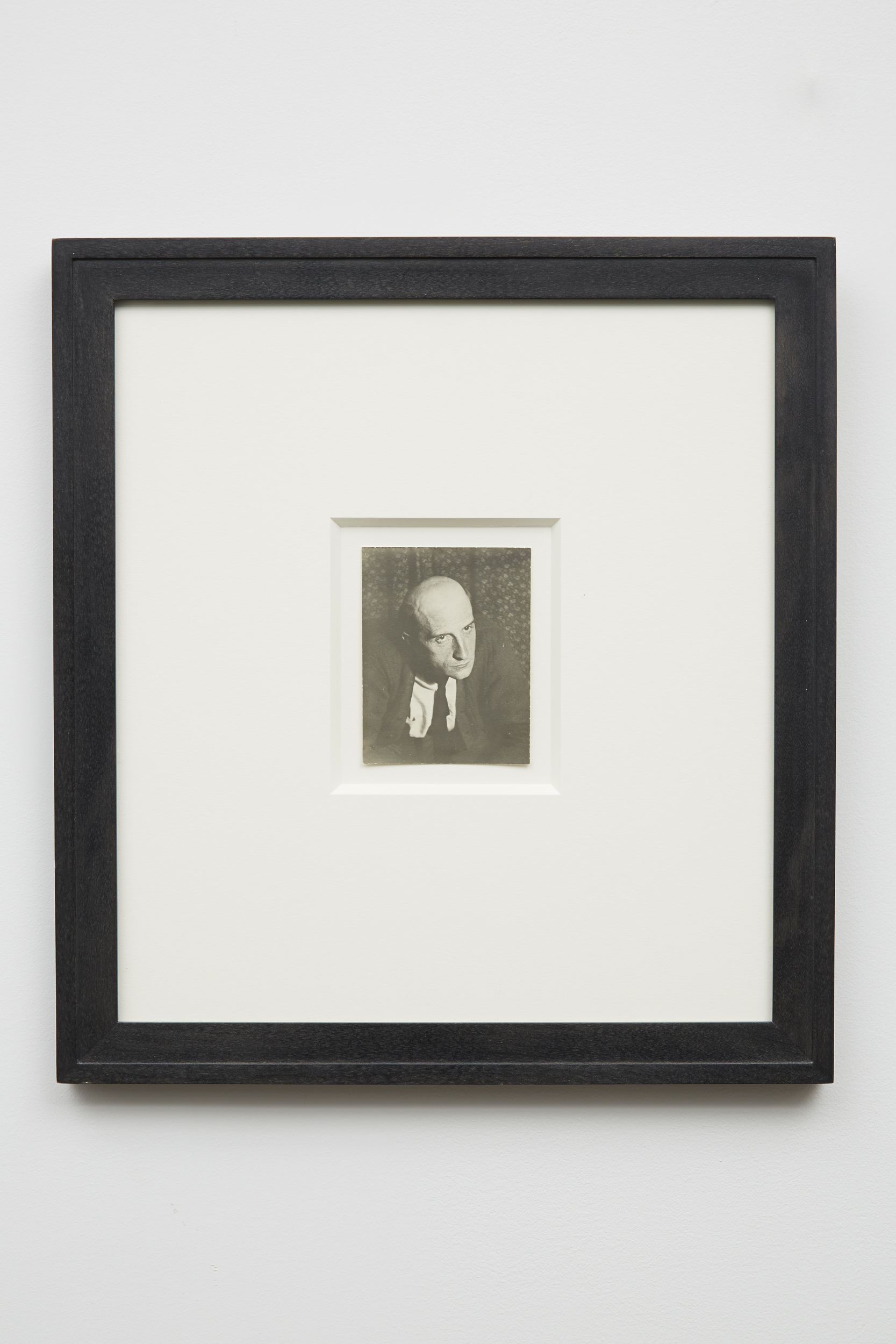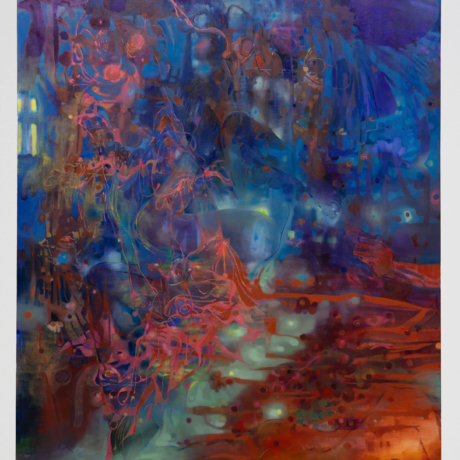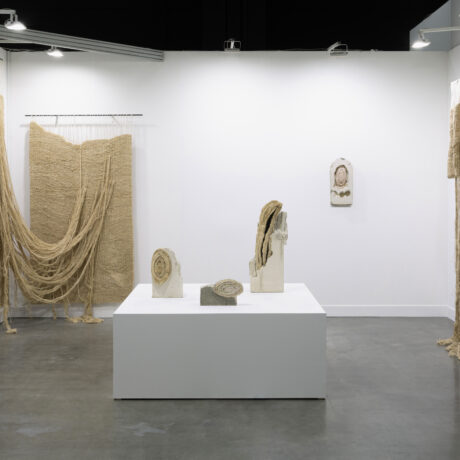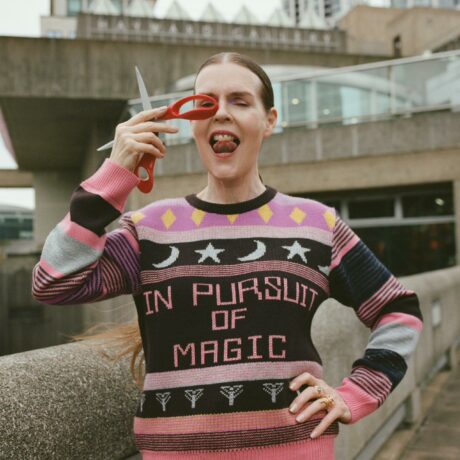Marcel Duchamp, Duchamp with Partial Tonsure, 1919
Gelatin silver print
In 1998 I found this intriguing image of Marcel Duchamp at the Chicago Art Fair. I inquired about it and was told it had probably been taken whilst Duchamp was in Argentina in 1919 and had contracted head lice. That explanation made little sense to me as Duchamp’s head is only partially shaven in a Flemish tonsure. Also if he did have head lice why would Duchamp, known to be handsome and something of a ladies man, allow himself to be thus photographed? I asked the price, which I was taken aback by, especially as the photographer was unknown but represented as being either Jean or Yvonne Crotti. I passed on it, but something about the work nagged at me over the subsequent year.
I returned to the Chicago Art Fair in 1999 and discovered the photograph was still available with the same dealer. I purchased it. Research indicated that there were two known variants of the photograph, but the story surrounding it still didn’t add up. I instinctively believed the photograph to be by Man Ray, but there was no scholarship to support that hunch. In 2009, I was asked to lend the work to an exhibition at the National Portrait Gallery in Washington. One of the curators, James McManus became as intrigued by it as I was. Through remarkable scholarship, James found the negative for the work in Man Ray’s archive at the Pompidou Center in Paris, conclusively proving that Duchamp had commissioned the photograph from his friend, Man Ray. Subsequently, James was able to establish that the photograph is potentially very significant, as he believes it to have been taken in a particular sequence with two other iconic works; Duchamp’s Tonsure (rear view), 1919 and the photograph that documents Duchamp’s transformation into his famous alter persona, Rrose Selavy, 1921.
Sean Kelly, Owner

Julian Charrière, Lost at Sea – Pikini-Fragment, 2016
Found Bikinian coconut, high-polished steel pedestal, coral sand, white glass, vitrine
This work for me is a poignant reminder of our power to affect nature. Housed inside a glass vitrine like a museum specimen, the coconut stands erect, suggestive of virility and potency. The irony here is that due to a genetic mutation caused by nuclear radiation, the coconut is utterly sterile from a reproductive standpoint. The once thriving, life-giving namesake of the Bikini Atoll, now unable to produce flesh or milk due to our nuclear arms race. Precious plants rendered useless. As the British band Gang of Four sang, the worst thing in 1954 was the bikini. What will we say the worst thing in 2017 was?
John Haenle, Registrar

Awol Erizku, Girl with the Bamboo Earring, 2009
Digital chromogenic print
On November 10, 2010, Sean and I attended the Cooper Union Visionaries Dinner at the invitation of Toshiko Mori, the gallery’s architect and family friend. During the event, there was an auction of artworks by recent grads to raise funds for the school. I had always been a great fan of Vermeer, and Erizku’s contemporary interpretation really struck me. I knew I needed to own it and made sure to outbid all competing offers. After the auction, they asked Sean and I if we’d like to be introduced to the artist and, of course, we accepted. Awol, Sean and I immediately hit it off and set up a studio visit. He is not only an artist I greatly admire, and continue to collect, but has become one of my closest friends. I chose this work because it brought Awol into our lives and for that, I will be forever grateful.
Lauren Kelly, Director

Los Carpinteros, Conga Irreversible, 2012
Single channel HD video projection (Blu-Ray) colour, audio, stereo, 11 minutes 53 seconds

Rocío Olivares, Viva Coco!, 2017
Video, found footage, 10 minutes 31 seconds
For my selection, I chose to show two video works side-by-side; Rocio Olivares Viva Coco (2017) and Los Carpinteros, Conga Irreversible (2012).
When we first began planning this exhibition, I happened to be visiting the Columbia University MFA Thesis Exhibition, where I saw Olivares’s film. I was deeply intrigued by the work as well as her clever reference to Los Carpinteros’s Conga Irreversible. Both videos are set at the historic Paseo del Prado in Havana and utilize the act of reversal as a means of interrogation.
As illustrated in Olivares’s film, the Paseo del Prado has a rich history. Originally built in 1722 by the Spanish colonial government, it has been the site of both political and recreational activities. One such activity, the performance of the Conga, a style of music and dance originating from the Afro-Cuban working class in the early 1900s, holds a unique relationship to class and politics in Cuba. Typified by its frenetic beats and jubilant, expressive movements, the street procession was initially banned by the government under pressure from the bourgeoisie. The dance was later appropriated by those same politicians in an effort to gain popularity during elections.
Los Carpinteros’s lively intervention is intended to subvert and somewhat mock Fidel Castro’s proclamation, “The revolution is irreversible.” They reclaim the act of performing the Conga, storming down the promenade whilst the spectators join them.
In Olivares’s film, the reversal takes the form of a personal interrogation. As the oral narration illuminates the listener with historical context, Olivares’s typewritten notes scroll along the bottom of the page: “BTW, I also enjoy watching this… I am their target audience after all, young and female.” We see how Olivares arrived at the Chanel runway footage in the first place and then, via the process of reversal deflates it. Olivares explores themes of power, colonization, appropriation and culpability. She challenges the viewer to do the same, as she said, “The ethics of appropriation respond to the space we occupy within this power asymmetry.”
I chose to show these works in large part to explore this statement further. The recent turmoil concerning the inclusion of Dana Schutz’s painting of Emmett Till in the Whitney Biennial and the Walker Museum’s controversial installation of Scaffold by Sam Durant brought up significant tensions regarding race, appropriation, politically charged histories, and who is authorized to speak on such topics. I believe the first step in this process is to assess where we, as the viewer/artist/institution, lie on this power asymmetry and how we choose to respond within that space. How are we culpable?
Gavin Runzel, Executive Assistant to Sean Kelly

‘Selected’ runs until 28 July at Sean Kelly gallery in New York. skny.com





